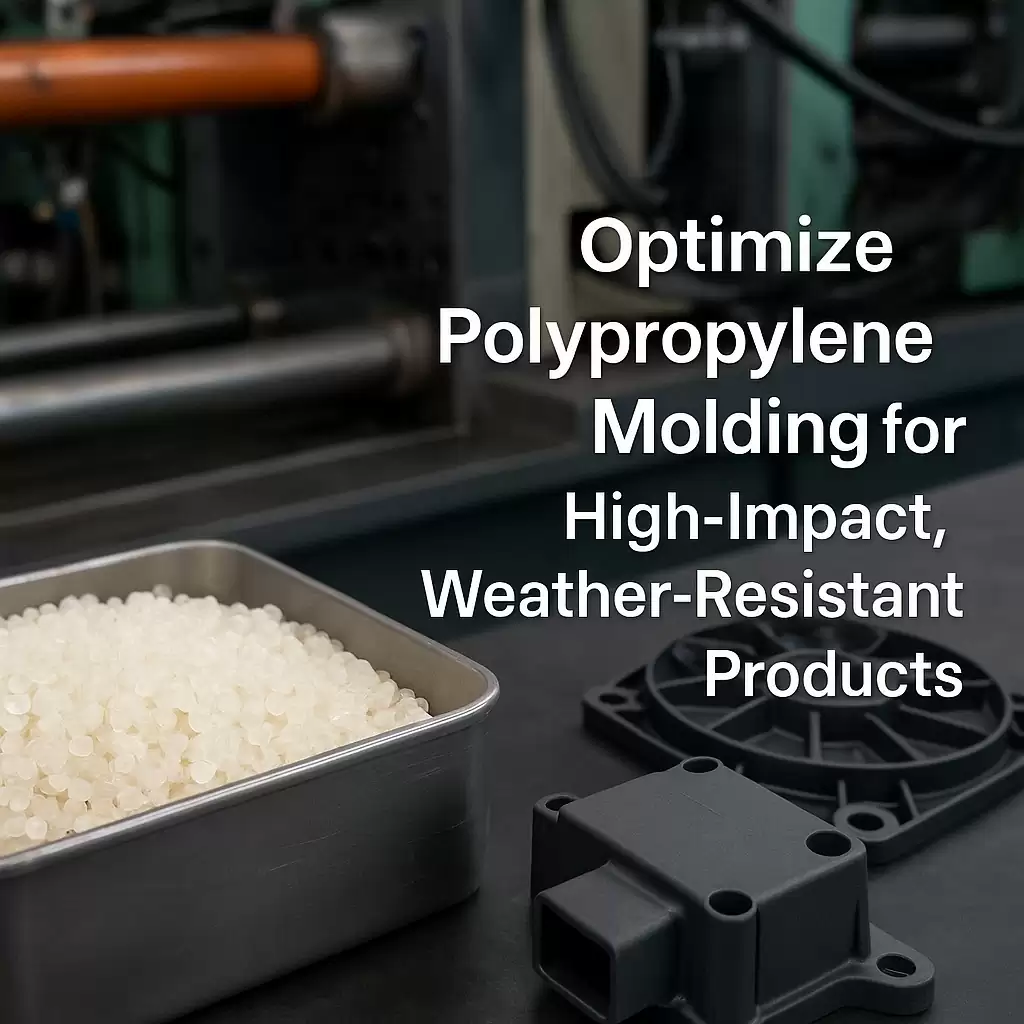Optimize Polypropylene Molding for High-Impact, Weather-Resistant Products
Optimize Polypropylene Molding for High-Impact, Weather-Resistant Products
Polypropylene (PP) is already prized for its chemical inertness and low density, but—with the right grade, additives, and process window—it can also hit impact-strength and weathering targets that rival more expensive engineering plastics. Follow the roadmap below to turn everyday PP into a rugged workhorse for outdoor power-equipment housings, sports-gear components, agricultural sprayer tanks and beyond.
1 Pick the Right PP Grade Up-Front
| Target Property | Recommended Grade | Typical Additives | Why It Works |
|---|---|---|---|
| Cold-Impact (–30 °C) | PP-block copolymer (MFI 4–8) | 10 % EPR rubber | Rubber micro-domains absorb crack energy |
| UV & Color Stability | PP-homo + HALS masterbatch | UV absorber + HALS | HALS prevents chain scission, keeps gloss |
| High Modulus & Impact | 20 % talc-filled PP-copolymer | Mineral + impact modifier | Talc raises stiffness, rubber offsets brittleness |
| Extreme Weather (sun + detergent) | PP-copo + 20 % GF + carbon black | UV, antioxidant package | GF raises strength; CB + HALS gives 1 000 h Xenon ΔE < 2 |
Supplier tip: Ask for a “UV-8” or “UV-10” package (HALS + UV absorber) if your part will see > 500 MJ/m² solar load over its life.
2 Design Guidelines for Impact & Weather Performance
-
Wall Thickness – 2.5 – 4 mm on structural zones; core anything > 6 mm to avoid sink.
-
Generous Radii – Inside radius ≥ 0.6 × wall to cut notch sensitivity.
-
Living Hinges – Use high-flow PP-homo; keep hinge 0.3–0.4 mm thick, flow across the hinge.
-
Ribs & Bosses – Rib thickness ≤ 0.6 × adjacent wall; vent bosses thoroughly for void-free pull.
-
Draft – ≥ 1° polished; ≥ 1.5° textured to prevent whitening on ejection.
3 Process Window—Lock in Mechanical & UV Integrity
| Parameter | Target Range | Reason |
|---|---|---|
| Melt Temp | 200 – 220 °C (thermo-oxidative limit) | Over-heat accelerates UV degradation |
| Mold Temp | 30 – 50 °C | Promotes uniform crystallinity → higher impact |
| Injection Speed | Fast, consistent | Cuts knit-line weakness |
| Pack Pressure | 80–90 % of peak | Eliminates voids without inducing stress |
| Cooling ΔT | ≤ 3 °C across cavity | Reduces warpage & gloss banding |
4 Additives That Stretch Outdoor Life—at Penny-Level Cost
| Additive | Loading | Benefit |
|---|---|---|
| HALS + UV Absorber | 0.5–2 % | 10× slow-down in surface chalking |
| Carbon Black (0.3 %) | Pigment | Natural UV screen; ΔE < 2 after 1 000 h Xenon |
| Antioxidant Package | 0.15 % | Prevents melt oxidation; essential for regrind loops |
| Slip/Anti-Scratch | 0.1–0.2 % erucamide | Reduces scuff marks on textured surfaces |
5 Validation Tests—Prove Your PP Can Take the Abuse
| Test | Method | Passing Target |
|---|---|---|
| Instrumented Impact | ISO 6603, –30 °C | No brittle fracture at spec energy |
| Xenon Weather-O-Meter | ASTM G155 (1 000 h) | ΔE < 2, impact drop ≤ 15 % |
| Chemical Soak | 10 % detergent, 50 °C, 7 days | < 0.5 % weight gain |
| Environmental Stress-Crack (ESCR) | ASTM D1693 | F50 ≥ 100 h |
6 Why Work With TaiwanMoldMaker.com for High-Impact, Weather-Resistant PP Parts
-
Grade Library: 150 + talc-, glass- and UV-modified PP resins stocked locally.
-
Conformal-Cooling Expertise: Cuts cycle time 10–25 % and tightens impact CpK.
-
Scientific-Molding Labs: Cavity-pressure sensors and DOE on T-1, ensuring first-shot dimensional success.
-
Integrated Hard-Coat & Laser Marking: Outdoor durability and branding in one facility.
???? One-Stop Internal Resources
(Bold anchors maximise internal SEO and click-through.)
Ready to Go Rugged?
Upload your CAD and performance targets to TaiwanMoldMaker.com for a 48-hour polypropylene DFM review, resin compatibility matrix, and costed timeline—so your high-impact, weather-resistant parts launch fast and last longer.









